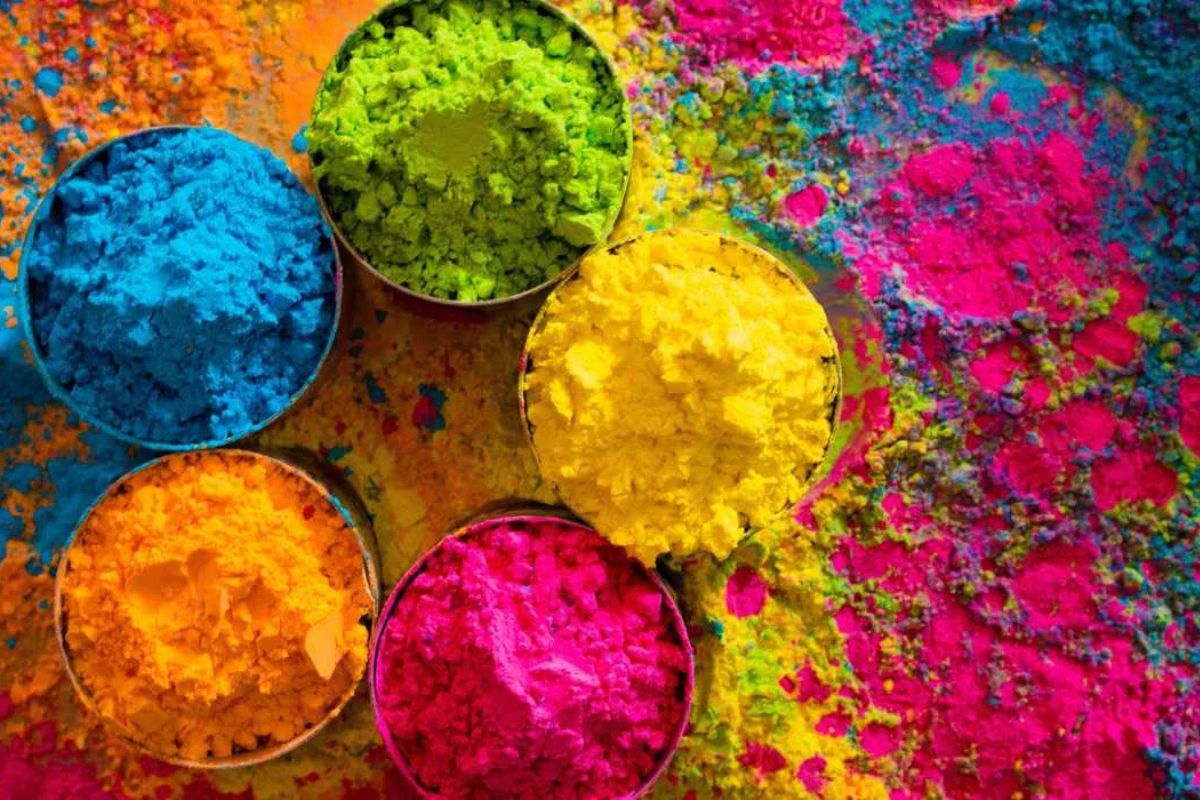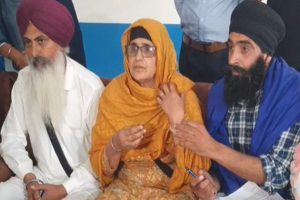As we all get ready to smear each other in this festive of colours of Holi, nature has also undergone a colourful transition; from the dreary look and mood of winter, it is now rollicking spring, accompanied by the merry chirping of birds and the bright hues of Mother Nature manifest in trees and flowers of the vernal season.
Holi is not merely a festival of colours but also a celebration of freedom. You are no longer hemmed in by the cold, and you don’t feel the urge to tuck yourself inside a furry pullover. A mellow, warm weather envelops you that has neither the chill of the previous months nor the scorching bite of the coming ones.
If you wake up early, you might hear a lone, joyful cry, “Holi hai.” But by ten in the morning, there are hordes out on the streets, spilling out of houses, riding atop trucks, crowded into cars, to visit friends with faces made anonymous through colour.
Thereby creating the magic of camaraderie by drawing even strangers into their orbit of their celebration. “Holi hai, Holi hai,” they scream, laugh, and shout, and it is only the stuffy ones who can take umbrage. There is so much spontaneity and abandon in celebrating Holi that it becomes a cathartic experience.
And there are places where the scales of justice are evened out! In village Barsana, in Rajasthan, for instance, Holi cuts across the sexual divide, and, like everywhere else, the male-female interaction is spontaneous. But here, the women are enjoined to take revenge for all the years of suffering at the hands of the men. They not only smear the menfolk with colour but chase them in a circle of dance, lashing at them with their broomsticks, or “jharoos”. And the men have to take it in a show of submission. All the while, there are special songs of Holi with sexual innuendos galore sung in teasing rhythms. These enchanting folk tunes have even been inducted into the Indian classical musical repertoire. There is one such song composed by the eminent exponent of what is known as the Rampur-Sahwan style by the late Ustad Mustaq Hussain Khan and which he used to sing with matching allure: “Maarat more nainan mein pitchkari / daiyan main to aise khilari se haari. / Garho rang lage chattiyan par, / khari lage pitchkari. / Javo balam mora ajura phatak hai / tum jeete, hum haari, balamva.”
Though quite known, it is pertinent to revisit the myth associated with this colour festival. The celebration of Holi centred around Lord Krishna and the ‘gopis’, the lovelorn maidens, who are basically a romantic guise for the devoted worshippers—the emotional and highly charged believers of the “bhakti” cult. Though Holi, a festival of irresistible bonhomie and camaraderie, has acquired quite secular tones, its origin can be traced to Hindu mythological lore. It signifies yet again the triumph of good over evil in the form of a story centering around a demon king, Hiranyakashipu.
This demon king worshipped Shiva and was frantically opposed to Vishnu.
His son, Prahlad, on the other hand, was an ardent devotee of Vishnu, the Creator. The father tried to destroy his son but failed. Hiranyakashipu’s sister, Holika, was immune to fire. He employed Holika to sit with Prahlad on a burning pyre and let him go up in flames. But it happened the other way around. Holika got burnt to death, and Prahlad emerged unscathed. So the worshippers of Vishnu celebrated the occasion by burning the effigy of Holika. They celebrate the event with ‘phag’ or powder on Phalguni Purnima Day.
Regarding dolotsav, the Vaishnav cult found expression in Radha and Krishna, as ‘dol’ refers to Krishna’s ‘dol’ or swing. According to Srimadbhagvata, Putana, a female demon, tried to kill Krishna, who was the eighth incarnation of Vishnu. When Krishna was a baby, his uncle, King Kansa, ordered a general massacre of all babies. Putana, in the disguise of a woman, suckled infants to death. Krishna, knowing her for what she was, sucked her lifeblood and destroyed her. In Mathura and Vrindavan, where the Krishna cult flourishes, the effigy of Putana is burnt. Holi is celebrated here with traditional songs, dances, and the spraying of colours.
Yet another legend associated with Holi is the destruction of Kamadeva, the god of love, by Shiva. Parvati, the daughter of Menaka and Himalaya, was deeply in love with Shiva. At that time, Shiva was immersed in deep meditation and took no notice of her. Kama, in order to help Parvati, disturbed Shiva’s meditation. The enraged god, with the power of his third eye, reduced Kama to ashes. Later, he was restored to life at the behest of Parvati. The meditation period of Shiva is considered to be the winter. The interruption leading to his marriage with Parvati signifies new life and fulfilment expressed through the festivities of spring and Holi.
The precursor to the joyful celebration of Holi is lighting the symbolic pyre on the eve of the festival to celebrate the destruction of evil epitomised by Holika: bonfires, crackers, a sense of triumph, and then the revelry. As the flames leap up, all the revellers release shouts of joy, and more dry leaves and pieces of timber are thrown into the burning structure to keep the joy fire raging as long as possible.
As a festival, Holi is quite old and has taken different forms in different cultures. Both the Aryans and the non-Aryans adopted this festival, and one of the reasons for this festival’s wide acceptability is that it is traditionally associated with the new year. It is a farewell to decadence and degeneration (which is ritualised in the Holika Dahan ceremony the previous evening) and a greeting to the new beginning. The predominant colours of Holi are red and green; red is a symbol of desire, and green stands for youth and vigour.
In Orissa, this festival is celebrated as ‘Dol Jatra’. In western India, in Goa, and in the Konkan, it is called “Simagh,” which is a celebration of youth and vitality. It is “Madan Daman” or “Kamayan” in south India. “Kamayan” represents the fulfilment of desire. North India calls this festival just “Holi” or ‘Hori’. In many parts of north India, especially in Mathura, Vrindavan, and Oudh, the Holi celebration lasts for a fortnight and is marked by the preparation of many delicious dishes and the strolling of revellers in colourful processions.
The writer is a freelance writer and teaches English at Sailendra Sircar Vidyalaya, Shyambazar, Kolkata











